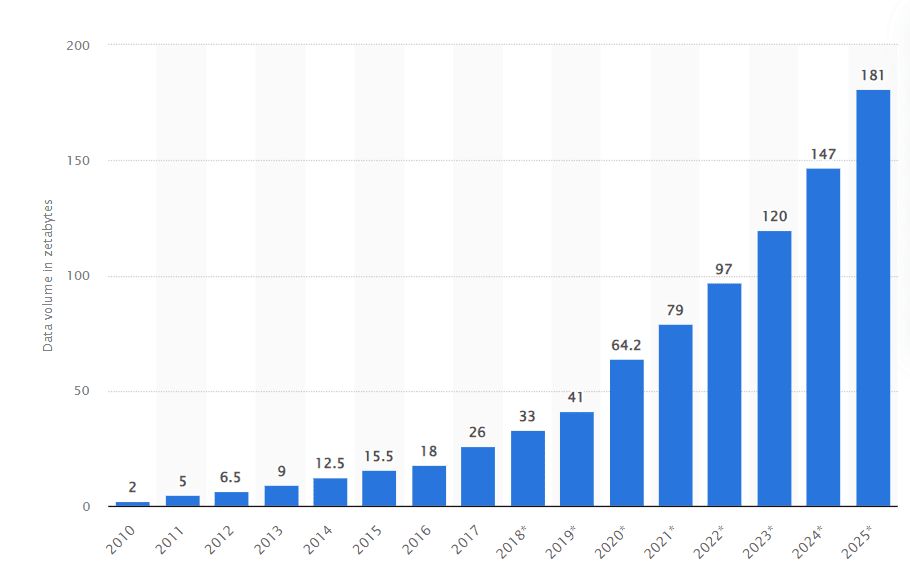Learn through the super-clean Baeldung Pro experience:
>> Membership and Baeldung Pro.
No ads, dark-mode and 6 months free of IntelliJ Idea Ultimate to start with.
Last updated: February 28, 2025
In this tutorial, we’ll delve into the topic of data quality. Today, data has emerged as a critical asset, especially for businesses and enterprises pursuing success. Companies utilize data for diverse purposes within their business operations.
However, it’s evident that without high-quality data, there cannot be a solid basis for informed decision-making and effective strategies.
We’ll introduce the concept of ‘data’ and its significance for businesses and explore methods for assessing data quality.
The rapid expansion of data worldwide is a consequence of the emergence of cheap and affordable devices connected to the Internet. These devices encompass computers, smartphones, watches, bracelets, cameras, microphones, and others, leading to many changes in our daily lives.
As technology progresses, particularly within the increasingly popular domain of the Internet of Things (IoT), we envision a future where commonplace household devices like toasters, light bulbs, and washing machines will either be linked to the Internet or possess the capability to collect data offline. Then, the total amount of data will grow even faster.
According to Statista, the total volume of data created, captured, copied, and consumed worldwide will grow to more than 180 zettabytes by 2025. To provide a relatable perspective, it’s worth noting that one zettabyte is equivalent to one billion () terabytes. We can observe the projection of data growth from 2010 to 2025 in the figure below:

Data plays a foundational role in the modern world. It serves as a vital component for many modern businesses. Some examples of data applications include:
For effective data utilization, it’s evident that the data must possess a certain level of quality. Let’s discuss more about that in the section below.
Data quality refers to the accuracy, completeness, reliability, and relevance of data. High-quality data is reliable and suitable for its intended purpose. It’s free from inconsistencies, inaccuracies, and duplication. High-quality data plays a vital role in enabling informed decisions, accurate analysis, and obtaining credible insights.
It’s clear that the quality of data highly depends on its intended purposes. Furthermore, a specific dataset can be extremely useful for one task but entirely irrelevant for another. For instance, in microchip manufacturing and research, scientists are conducting experiments with nanometer-precise measurements. In contrast, Large Language Models (LLMs) like ChatGPT were trained on hundreds of gigabytes of internet text sources, which may not be the most “accurate” data.
There are a lot of different factors that can impact data quality. In this article, we’ll discuss four main qualities of data itself.
The main four elements that are important for data quality are:
We can define the accuracy of data as the current state of our data versus reality. It measures how well the data reflects the true attributes or characteristics of the subject it represents. Data accuracy is crucial for making informed decisions and drawing meaningful insights.
Generating accurate conclusions relies on precise data. For instance, accuracy holds significant importance in the management of medical records. The correctness of patient information, diagnoses, and treatment details ensures that healthcare providers can make well-informed decisions and provide appropriate care.
The next element of data quality is its completeness. Data completeness refers to the state in which a dataset contains all the necessary and expected information without any significant gaps or missing values. Incomplete data can lead to inaccurate or biased results when using the data for analysis, decision-making, or any other application.
Consistency demonstrates the level of uniformity within a dataset across various data sources. In a consistent dataset, information is coherent and matches across various contexts or points in time. There are numerous examples of inconsistent data sets. For instance, variations in measurement units, varying numbers of digits, dissimilar customer address formats, images with differing resolutions, and more.
Lastly, we have uniqueness, which refers to the number of duplicates that we have in a data set. Unique data ensures that there are no repeated or identical entries, making each piece of data singular and exclusive.
In practice, the majority of datasets are not perfect and possess room for improvement. Enhancing data quality involves implementing strategies and methodologies to refine the accuracy, completeness, consistency, and uniqueness of the information contained within the datasets. Here are some steps to improve data quality:
In this article, we’ve introduced the importance of data in today’s world. We’ve explained what data quality is, the elements of data quality, and how to improve data in general.
In today’s world, data drives choices, innovations, and insights. Making sure data is accurate, complete, and consistent is really important. In a time when information is growing fast, adopting data quality rules helps people and businesses take full advantage of their data.